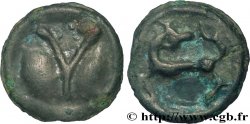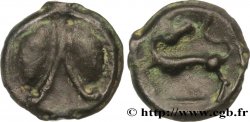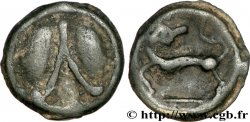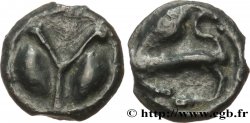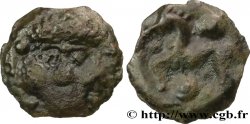bga_346034 - GALLIA - BELGICA - PARIS AREA Fibule monétiforme
недоступный.
Товар уже продан в нашем интернет-магазине (2015)
Цена: : 390.00 €
Товар уже продан в нашем интернет-магазине (2015)
Цена: : 390.00 €
Тип Fibule monétiforme
Дата: c. IV-IXe siècles après J.-C.
Металл: bronze
Диаметр: 23,5 mm
Вес: 4,01 g.
Редкость: R3
Комментарии о состоянии
Objet avec un avers complet et bien identifiable. Revers sans l’ardillon. Belle patine verte, un peu hétérogène par endroits
Ссылки в каталоге: :
Лицевая сторона
Аверс: легенда: ANÉPIGRAPHE.
Аверс: описание: Tête nue à droite, la chevelure en mèches raides tirées en arrière ; grènetis et bourrelet périphérique.
Обратная сторона
Реверс: Описание: Traces de l’ardillon.
Комментарий
Cet objet n’est probablement pas d’origine gauloise, mais il a bel et bien sa place dans cette boutique.
Réalisé plusieurs siècles après que les monnaies gauloises aient cessé de circuler en Gaule, cette fibule s’inspire d’un potin gaulois !
Le prototype n’est pas le potin dit “à la cigarette”, comme nous l’avions proposé dans MONNAIES XV (n° 1063) mais plus vraisemblablement le “Potin au cheval”, classe III (LT. 7859).
Les deux trous sont vraisemblablement des traces de suspension, marquant une réutilisation postérieure.
Des objets techniquement comparables auraient été découverts dans des sépultures de l'époque mérovingienne. Les monnaies gauloises se retrouvent couramment dans les tombes mérovingiennes. Cette parure pourrait très bien être le dessus d'une fibule, dont il manque l'ardillon, réalisée par un artisan (de l'époque gauloise à l'époque médiévale) séduit par l'iconographie du potin celtique dit “à la cigarette” qu'il aurait eu entre les mains.
Réalisé plusieurs siècles après que les monnaies gauloises aient cessé de circuler en Gaule, cette fibule s’inspire d’un potin gaulois !
Le prototype n’est pas le potin dit “à la cigarette”, comme nous l’avions proposé dans MONNAIES XV (n° 1063) mais plus vraisemblablement le “Potin au cheval”, classe III (LT. 7859).
Les deux trous sont vraisemblablement des traces de suspension, marquant une réutilisation postérieure.
Des objets techniquement comparables auraient été découverts dans des sépultures de l'époque mérovingienne. Les monnaies gauloises se retrouvent couramment dans les tombes mérovingiennes. Cette parure pourrait très bien être le dessus d'une fibule, dont il manque l'ardillon, réalisée par un artisan (de l'époque gauloise à l'époque médiévale) séduit par l'iconographie du potin celtique dit “à la cigarette” qu'il aurait eu entre les mains.







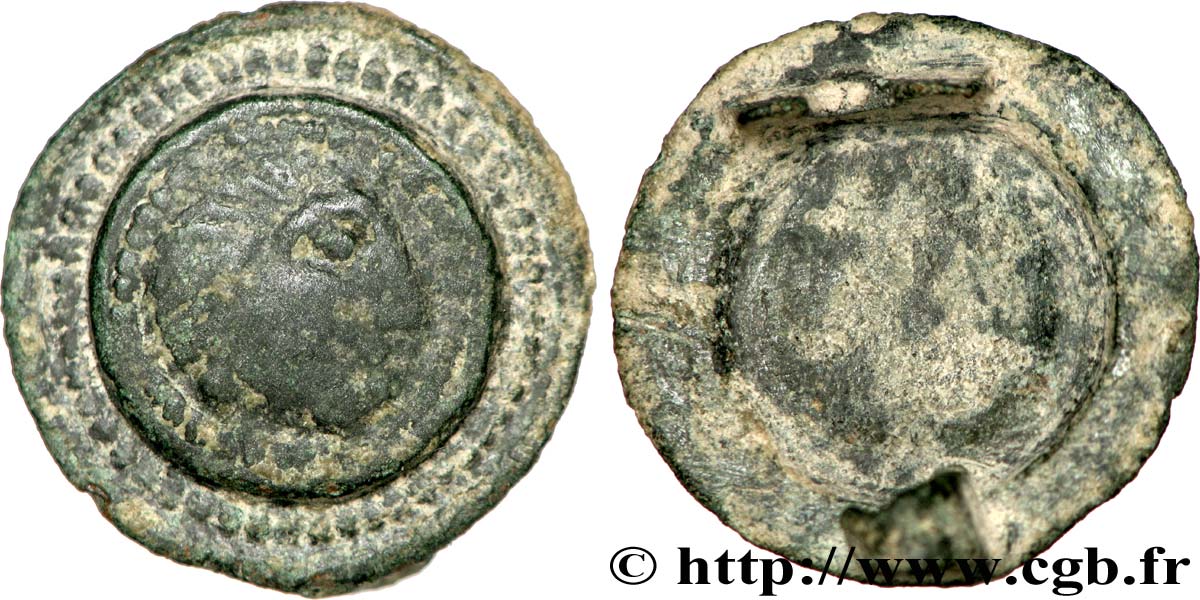
 Cообщить об ошибке
Cообщить об ошибке Распечатать страницу
Распечатать страницу Отправить мой выбор
Отправить мой выбор Задать вопрос
Задать вопрос Consign / sell
Consign / sell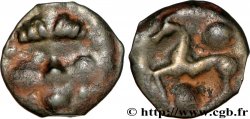
 Информация
Информация